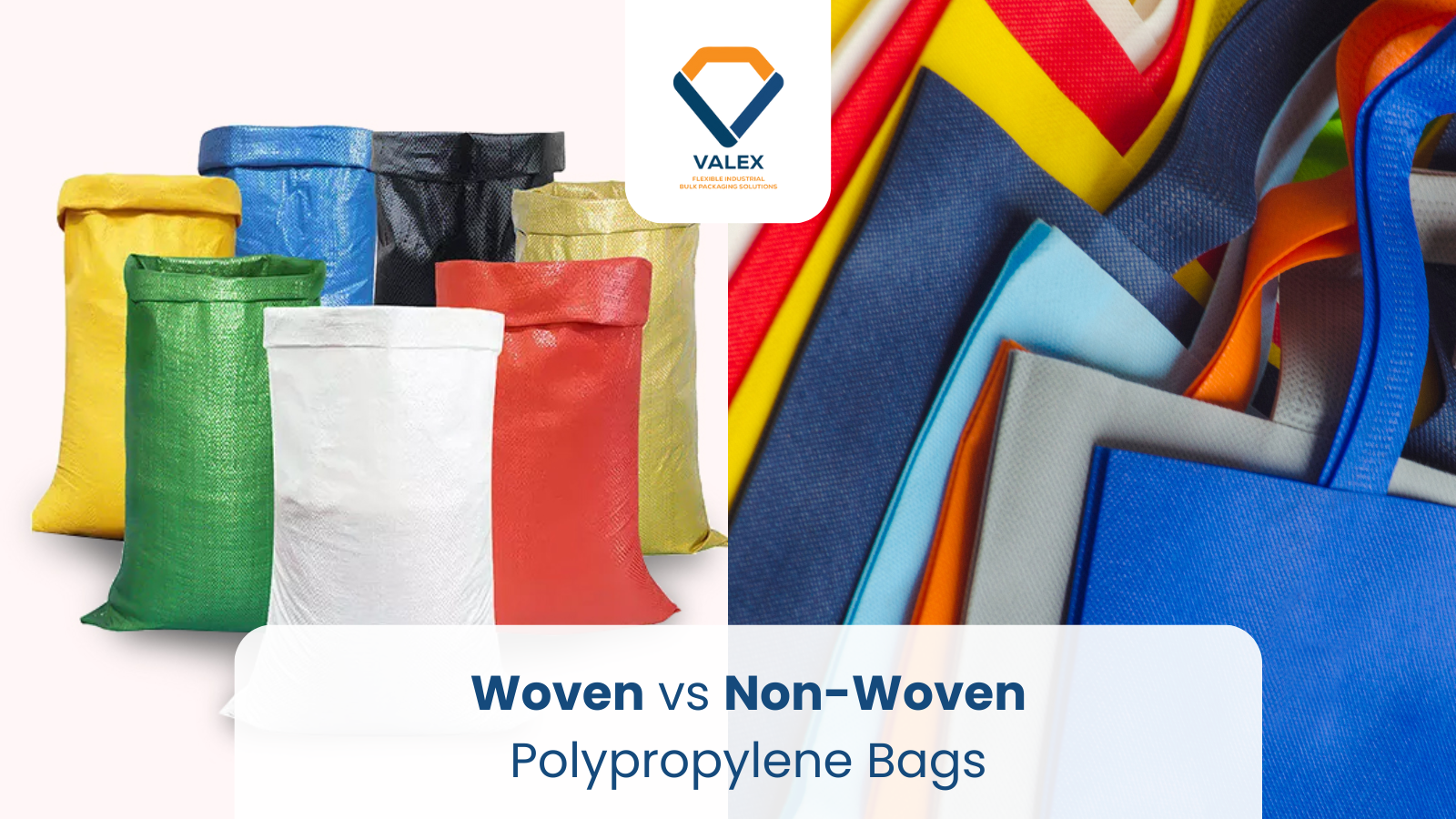When it comes to selecting packaging for your products, understanding material properties is key. Two popular options are woven polypropylene bags and non-woven polypropylene bags. Both materials share durability and moisture resistance but differ in construction, cost, and best-fit uses. Whether you need bulk sacks for industrial goods or lightweight shopping bags, knowing the differences between woven and non-woven polypropylene bags will help you make the right choice.
Woven PP bags, often called woven polypropylene sacks or woven poly bags, are made by weaving polypropylene strips into a strong fabric. This process creates a grid-like pattern that gives the material high tensile strength and tear resistance. Manufacturers roll the woven fabric into large sheets, cut it to size, and seal edges with heat or stitching.
Key Features of Woven Polypropylene Bags

Companies seeking a pp woven bags manufacturer often look for high-quality weaving and reliable sealing to ensure consistent performance.
Non-woven polypropylene bags are made by bonding polypropylene fibers together to form a sheet without weaving. This results in a fabric that looks and feels more like cloth. Production involves spinning polypropylene into fibers, laying them into a web, and bonding with heat or adhesives.
Key Features of Non-Woven Polypropylene Bags
Non-woven bags often serve as shopping totes, conference giveaways, or short-term packaging where appearance and cost matter.
| Characteristic | Woven Polypropylene Bags | Non-Woven Polypropylene Bags |
| Fabric Structure | Interlaced strips, grid pattern | Bonded fibers, uniform sheet |
| Tensile Strength | Very high, handles heavy loads | Moderate, best for lightweight items |
| Durability | Excellent abrasion resistance | Less abrasion resistant |
| Reusability | Can be reused many times | Reusable but less so over long term |
| Cost | Slightly higher raw material cost | Generally lower production cost |
| Hand Feel and Appearance | Stiffer, more industrial look | Softer, more textile-like finish |
| Printing and Branding | Very good surface for printing | Good, but inks may need pre-treatment |
| Breathability | Can be perforated for airflow | Limited without special perforations |
| Water Resistance | Good, especially when laminated | Good, but requires lamination for barriers |
This table highlights why you might choose a woven polypropylene bag for construction materials or a non-woven polypropylene bag for lightweight retail packaging.
When to Choose Woven Polypropylene Bags
When to Choose Non-Woven Polypropylene Bags
Choosing between woven vs. non-woven fabric depends on load requirements, expected lifespan, and brand presentation.
Both woven and non-woven bags are recyclable under polypropylene code 5. To maximize sustainability:
Recycling and reuse strategies help reduce plastic waste and support circular-economy goals.
Selecting between woven polypropylene bags and non-woven polypropylene bags comes down to application needs. Woven bags deliver superior strength, durability, and reusability, making them ideal for heavy or abrasive materials. Non-woven bags offer lower cost, softer texture, and lighter weight, perfect for retail and promotional uses. By weighing factors such as load requirements, lifespan, printing needs, and sustainability goals, you can choose the right polypropylene bag for your business.
If you're ready to find the best solution, reach out to Valex Ventures and compare samples to ensure optimal performance for your products.